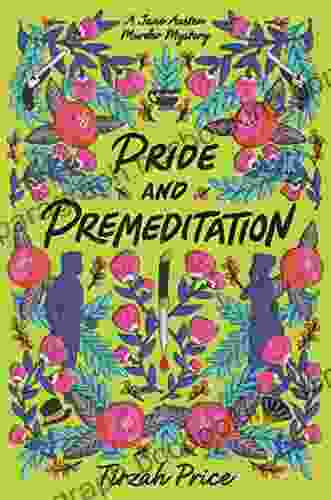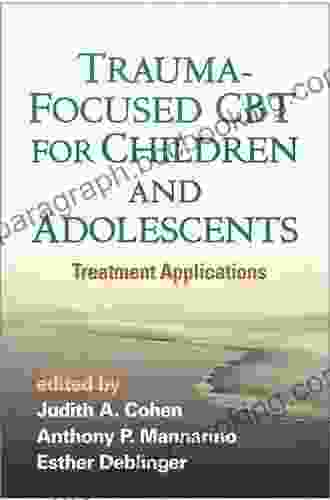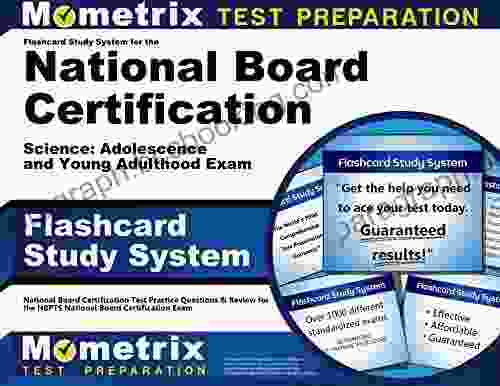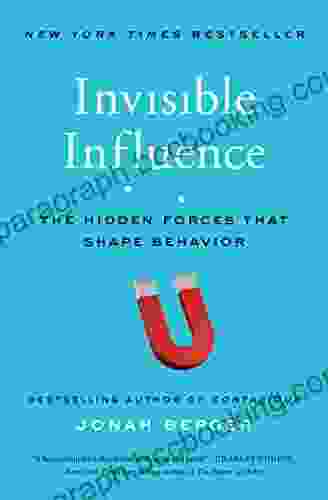Adolescence And Young Adulthood: A Comprehensive Guide

The transition from adolescence to young adulthood is a time of significant change, both physically and emotionally. It can be a confusing and challenging time for both the individual and their family.
This comprehensive guide will provide you with all the information you need to understand the physical, cognitive, social, emotional, and moral development of adolescents and young adults. We will also discuss the challenges and opportunities that they face, as well as how to support them during this important time.
4.3 out of 5
| Language | : | English |
| File size | : | 792 KB |
| Text-to-Speech | : | Enabled |
| Screen Reader | : | Supported |
| Enhanced typesetting | : | Enabled |
| Print length | : | 1356 pages |
Physical Development
The physical changes that occur during adolescence and young adulthood are dramatic. For girls, the onset of puberty typically occurs between the ages of 10 and 14, while for boys it occurs between the ages of 12 and 16. During this time, the body undergoes a number of changes, including:
- The development of secondary sexual characteristics, such as breasts in girls and facial hair in boys - A growth spurt, which can add several inches to the individual's height - Changes in body composition, with an increase in muscle mass and a decrease in body fat - The development of the reproductive system
These physical changes can be a source of anxiety and stress for some adolescents and young adults. It is important to provide them with accurate information about what to expect and to reassure them that they are not alone.
Cognitive Development
The cognitive development that occurs during adolescence and young adulthood is just as significant as the physical changes. During this time, the individual's ability to think abstractly, solve problems, and make decisions improves dramatically. They also develop a greater understanding of themselves and the world around them.
This cognitive development can lead to a number of changes in the way that adolescents and young adults think and behave. They may become more independent and assertive, and they may begin to question the values and beliefs that they were taught as children. They may also become more interested in social and political issues.
It is important to be patient and understanding with adolescents and young adults during this time of cognitive development. They are still learning how to use their new abilities, and they may make some mistakes along the way. However, it is also important to encourage them to think critically and to develop their own opinions.
Social Development
The social development that occurs during adolescence and young adulthood is also significant. During this time, the individual's relationships with their family and friends change, and they begin to develop new relationships with peers and romantic partners.
For many adolescents and young adults, their peer group becomes increasingly important. They may spend more time with their friends than with their family, and they may be more influenced by their friends' opinions and values. This can be a positive development, as it can help the individual to develop a sense of identity and belonging. However, it is also important to make sure that adolescents and young adults are not spending too much time with their friends and that they are still maintaining healthy relationships with their family.
Romantic relationships also become more common during adolescence and young adulthood. These relationships can be a source of great joy and support, but they can also be a source of stress and conflict. It is important to help adolescents and young adults to develop healthy relationship skills, such as communication, compromise, and conflict resolution.
Emotional Development
The emotional development that occurs during adolescence and young adulthood is just as important as the physical, cognitive, and social development. During this time, the individual's ability to regulate their emotions improves, and they develop a greater understanding of their own feelings and the feelings of others.
However, adolescents and young adults can still be emotionally volatile. They may experience intense emotions, such as anger, sadness, and joy, and they may have difficulty controlling these emotions. They may also be more sensitive to criticism and rejection, and they may have difficulty coping with stress.
It is important to be patient and understanding with adolescents and young adults during this time of emotional development. They are still learning how to manage their emotions, and they may make some mistakes along the way. However, it is also important to encourage them to talk about their feelings and to develop healthy coping mechanisms.
Moral Development
The moral development that occurs during adolescence and young adulthood is also important. During this time, the individual develops a greater understanding of right and wrong, and they begin to develop their own moral values.
This moral development can be influenced by a number of factors, such as the individual's family, peers, and culture. It is important to help adolescents and young adults to develop a strong moral compass, so that they can make good decisions and live ethical lives.
Career Development
The career development that occurs during adolescence and young adulthood is also important. During this time, the individual begins to explore their career options and to develop their skills and knowledge.
This career development can be influenced by a number of factors, such as the individual's interests, abilities, and values. It is important to help adolescents and young adults to develop a realistic career plan, so that they can achieve their goals.
Relationships
The relationships that adolescents and young adults form are an important part of their development. These relationships can provide them with support, guidance, and love.
However, adolescents and young adults may also experience challenges in their relationships. They may have difficulty communicating with their parents, they may be bullied by their peers, or they may experience relationship problems with their romantic partners.
It is important to help adolescents and young adults to develop healthy relationships. This can be done by teaching them how to communicate effectively, how to resolve conflict, and how to set boundaries.
Education
Education is an important part of adolescence and young adulthood. It can provide adolescents and young adults with the skills and knowledge they need to be successful in life.
However, adolescents and young adults may also experience challenges in school. They may have difficulty with their coursework, they may be bullied by their peers, or they may feel overwhelmed by the pressure to succeed.
It is important to help adolescents and young adults to succeed in school. This can be done by providing them with academic support, by encouraging them to get involved in extracurricular activities, and by creating a positive and supportive learning environment.
Health
The health of adolescents and young adults is an important concern. This is a time of great physical and emotional change, and adolescents and young adults are vulnerable to a number of health risks.
Some of the most common health risks for adolescents and young adults include:
- Obesity - Eating disFree Downloads - Substance abuse - Depression - Suicide
It is
4.3 out of 5
| Language | : | English |
| File size | : | 792 KB |
| Text-to-Speech | : | Enabled |
| Screen Reader | : | Supported |
| Enhanced typesetting | : | Enabled |
| Print length | : | 1356 pages |
Do you want to contribute by writing guest posts on this blog?
Please contact us and send us a resume of previous articles that you have written.
 Book
Book Novel
Novel Page
Page Chapter
Chapter Text
Text Story
Story Genre
Genre Reader
Reader Library
Library Paperback
Paperback E-book
E-book Magazine
Magazine Newspaper
Newspaper Paragraph
Paragraph Sentence
Sentence Bookmark
Bookmark Shelf
Shelf Glossary
Glossary Bibliography
Bibliography Foreword
Foreword Preface
Preface Synopsis
Synopsis Annotation
Annotation Footnote
Footnote Manuscript
Manuscript Scroll
Scroll Codex
Codex Tome
Tome Bestseller
Bestseller Classics
Classics Library card
Library card Narrative
Narrative Biography
Biography Autobiography
Autobiography Memoir
Memoir Reference
Reference Encyclopedia
Encyclopedia Ladym Forkids
Ladym Forkids Mike Dawson
Mike Dawson Joshua M Powell
Joshua M Powell Joseph Vaughn
Joseph Vaughn John Maynard Keynes
John Maynard Keynes Jonathan Brooks
Jonathan Brooks Jorge S Olson
Jorge S Olson Josephine Mccarthy
Josephine Mccarthy Jordan D Metzl
Jordan D Metzl John Romer
John Romer Johno Ellison
Johno Ellison Stephen Clarke
Stephen Clarke Steven Bradley
Steven Bradley Joy Hendry
Joy Hendry Nick Payne
Nick Payne John Nunn
John Nunn William Least Heat Moon
William Least Heat Moon Josephine Perry
Josephine Perry Michael J Hathaway
Michael J Hathaway John Wyatt
John Wyatt
Light bulbAdvertise smarter! Our strategic ad space ensures maximum exposure. Reserve your spot today!

 Garrett BellOne Man's Journey Through Infertility: A Story of Resilience, Hope, and the...
Garrett BellOne Man's Journey Through Infertility: A Story of Resilience, Hope, and the...
 George HayesUnveiling the Consequences: The Price Paid for Rejecting Islam Explores the...
George HayesUnveiling the Consequences: The Price Paid for Rejecting Islam Explores the... Victor HugoFollow ·8.4k
Victor HugoFollow ·8.4k Michael SimmonsFollow ·14.1k
Michael SimmonsFollow ·14.1k David PetersonFollow ·3.5k
David PetersonFollow ·3.5k Enrique BlairFollow ·6.9k
Enrique BlairFollow ·6.9k Terence NelsonFollow ·16.5k
Terence NelsonFollow ·16.5k Chase MorrisFollow ·7.1k
Chase MorrisFollow ·7.1k Cruz SimmonsFollow ·12.9k
Cruz SimmonsFollow ·12.9k Langston HughesFollow ·6.7k
Langston HughesFollow ·6.7k

 Joseph Foster
Joseph FosterUnravel the Enigmatic Murders in "Pride and...
Dive into a World...

 Jeffery Bell
Jeffery BellTrauma-Focused CBT for Children and Adolescents: The...
Trauma is a...

 Jorge Luis Borges
Jorge Luis BorgesSense and Second Degree Murder: A Jane Austen Murder...
Prepare yourself for a...

 Chase Simmons
Chase SimmonsUnleash the Vibrant World of Watercolor: An Enchanting...
In the world of art, watercolor painting...

 Rubén Darío
Rubén DaríoAmerican Funny Animal Comics In The 20th Century: A...
Step into a bygone era of laughter and...
4.3 out of 5
| Language | : | English |
| File size | : | 792 KB |
| Text-to-Speech | : | Enabled |
| Screen Reader | : | Supported |
| Enhanced typesetting | : | Enabled |
| Print length | : | 1356 pages |










